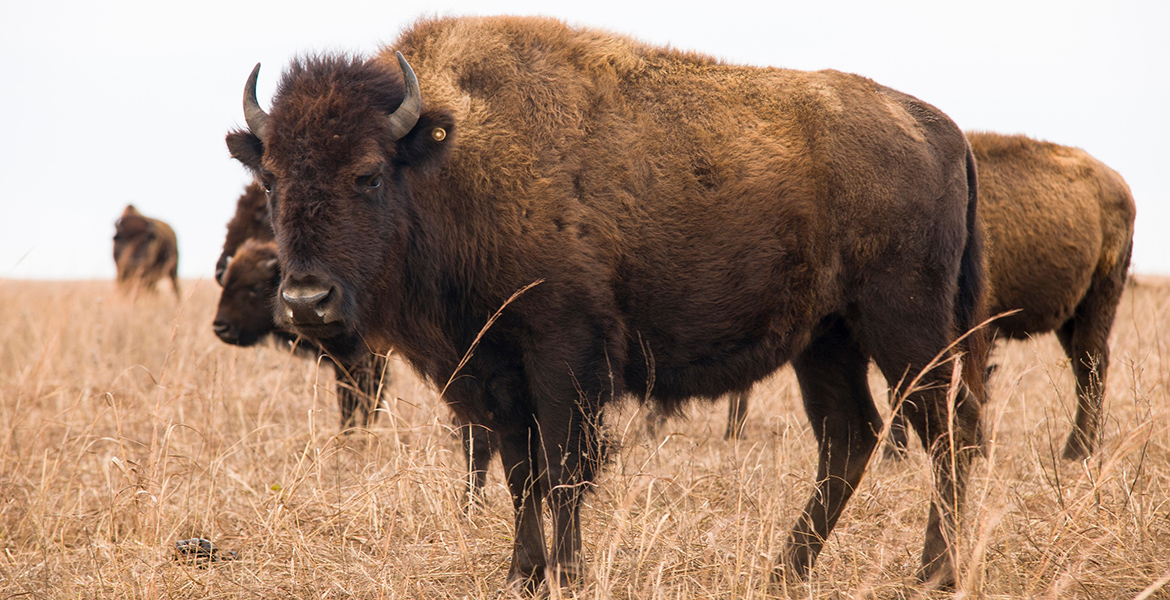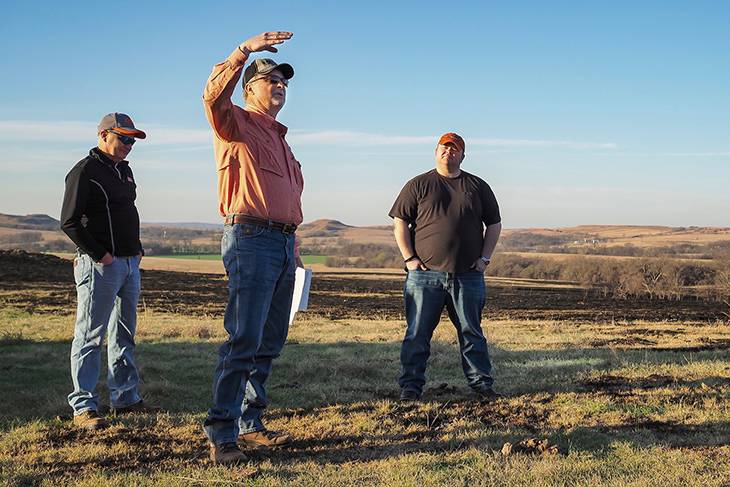
Patch burning is conservation, economics done right
Monday, April 20, 2020
As people across the world reflect on the 50th anniversary of Earth Day, agricultural producers and other Oklahoma land stewards can attest to the positive environmental and economic effects that patch burning provides.
Patch burning is a controlled approach to regenerating pasture by burning sections at a time to manage grazing pressure on plants and soil. The shifting mosaic more closely mimics Mother Nature, for which fire is vital for renewal. It can be especially important in states with large numbers of grazing animals such as Oklahoma, which regularly ranks as the nation’s fourth- or fifth-leading producer of cattle.
“Patch burning allows livestock to freely select the most recently burned part of available pastureland, much as American bison did on the open grasslands for centuries,” said John Weir, Oklahoma State University Extension associate prescribed fire specialist and researcher. “Livestock typically spend about 75% of their time on these patches and tend to use all the palatable plants within the burned patch.”
The preferential grazing of burned patches promotes a diversity of plant species, which in turn contributes to wildlife habitat as well as benefits to livestock. Prescribed fire helps to lessen tick and fly populations, improving animals’ comfort and reducing disease transmission.
More than 20 years ago, researchers with OSU’s Division of Agricultural Sciences and Natural Resource began to intensively study patch burning as a potential tool. At the time, fire application and grazing management typically were discussed as separate practices. Thanks in large part to OSU Extension, that research was integrated into programs usable by land managers across the state. Small smoke plumes on the horizon are a common sight now in Oklahoma.
“It’s difficult for private landowners to do practices that are not cost effective, so it is important to develop management tools that promote environmental stewardship in economically viable ways,” said Sam Fuhlendorf, OSU Regents professor and holder of the university’s Groendyke Chair in Wildlife Management. “Prescribed burning also helps mitigate the effects of wildfires.”

Fuhlendorf said increased dominance of trees is the greatest threat to agricultural production and wildlife conservation on rangelands. There are many potential approaches to manage tree invasions in Oklahoma, but research and years of accumulated evidence have shown none are as cost effective as using fire, browsing and grazing.
OSU researchers have been working for decades toward a model of conservation done right: to help land managers understand how the ecosystem of America’s Great Plains region functions so they can make decisions based on knowledge of the whole. It is a process that can maximize insights across a wide variety of land management objectives, from agricultural production to recreation, to wildlife habitat improvement, watershed management and even enhanced absorption of greenhouse gases.
“Each new study incrementally adds more knowledge about the complexity of ecosystems,” said Dwayne Elmore, OSU Extension wildlife specialist and holder of the university’s Bollenbach Chair in Wildlife Management. “What most land managers have in common are multiple land-use objectives. This is where land-grant universities such as Oklahoma State excel, where new research-based information is quickly integrated and disseminated.”
One could say Earth Day – with its focus on bringing awareness to environmental challenges and issues – is a great time to celebrate the land-grant mission of teaching, research and Extension in Oklahoma. Learning is the way people better understand the world around them. Research is, at its heart, a series of repeatable steps designed to acquire knowledge while mitigating human bias. Extension is the application of research-based knowledge to solve issues and concerns important to residents, their families and their communities.
“Land-management practices need to be based on facts rather than feelings,” Weir said. “In this time where people are surrounded by the availability of so much information, we need to do all we can to ensure the information they are getting and using is from reliable sources because decisions about managing the land can impact it for generations.”
For more research-based information about patch burning and other land management practices, visit OSU Extension online at http://extension.okstate.edu, or contact the nearest OSU Extension county office. OSU Extension fact sheet E-998 on patch burning is a good starting resource.
Agricultural landowners may want to watch the following video segments produced as part of the OSU Extension television program SUNUP: “Controlling horn flies with prescribed burns” and “Planning a prescribed burn.”
OSU’s Division of Agricultural Sciences and Natural Resources is comprised of the college of the same name and the university’s two state agencies: OSU Extension and the Oklahoma Agricultural Experiment Station system.
MEDIA CONTACT: Donald Stotts | Agricultural Communications Services | 405-744-4079 | donald.stotts@okstate.edu
